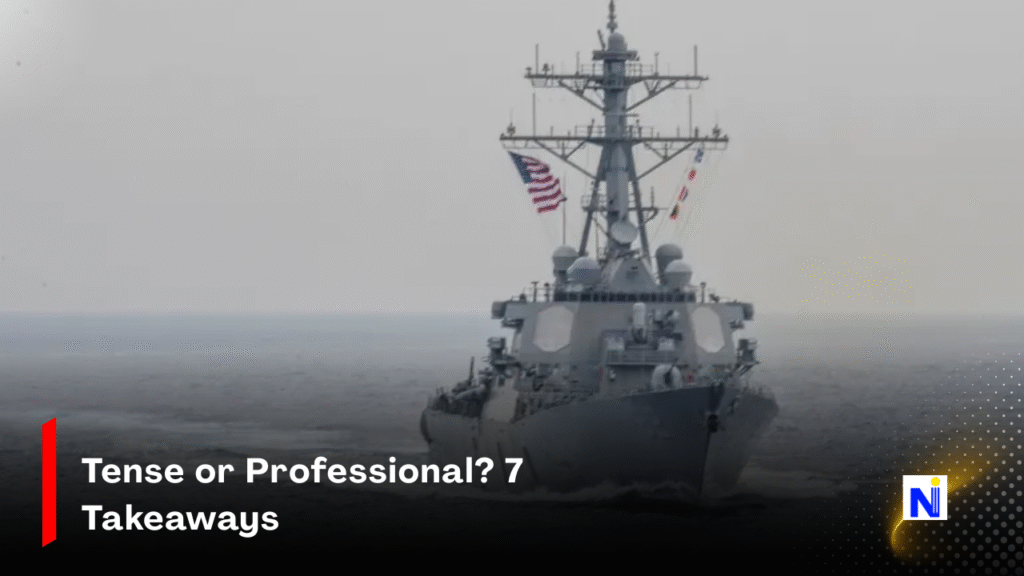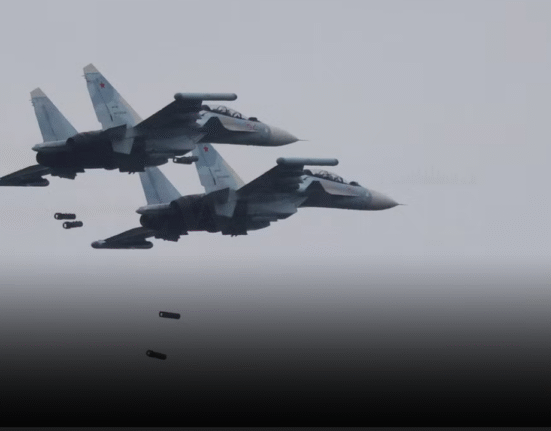
When two heavily armed militaries meet in the narrow waters off Iran, adjectives matter. Tehran called Wednesday’s encounter with a US guided-missile destroyer “tense.” US Central Command replied it was “safe and professional.” Somewhere between those two labels lies the truth—and the risk. In this deep-dive, we break down what happened, why it matters, and how this latest brush-up could shape the next chapter of regional security. We’ll also look at what both sides claimed, the legal fine print around “territorial waters,” and the broader shadow of the June Iran–Israel war that set the current temperature. For clarity and SEO sanity, we’ll reference the iran navy destroyer dispute sparingly and naturally.
Quick Summary (TL;DR)
- Incident time: ~10:00 local (06:00 GMT) on Wednesday in the Gulf of Oman.
- Iran’s claim: A US destroyer approached waters under Iran’s monitoring; a helicopter issued warnings; the vessel ultimately left after “continued warnings.”
- US response: The interaction was “safe and professional” and entirely in international waters, with no impact on the destroyer’s mission.
- Aircraft identified by the US: An Iranian SH-3 Sea King helicopter.
- Backdrop: Comes after June’s 12-day war between Iran and Israel, and US strikes on Iranian nuclear sites that President Donald Trump called “spectacular.”
- Why it matters: Competing narratives shape regional perceptions, test red lines, and could influence future encounters in crowded maritime corridors.
The Timeline: What Each Side Says Happened
Iran’s version
- A US Navy destroyer (USS Fitzgerald) “attempted to approach waters under Iran’s monitoring.”
- An IRGC-linked helicopter confronted the warship, issuing radio warnings in English.
- The US warship reportedly threatened to target the helicopter if it didn’t depart.
- After continued warnings, the destroyer left the area, per Iranian media.
The US version
- No tension, just a “safe and professional” interaction.
- Happened entirely in international waters, per a US defense official.
- The USS Fitzgerald’s mission was unaffected; claims to the contrary are “falsehoods” and IRGC misinformation.
- The helicopter was identified as an Iranian SH-3 Sea King.
Side-by-Side: Claims at a Glance
| Issue | Iran’s Narrative | US Narrative |
|---|---|---|
| Location | Approaching waters under Iran’s monitoring | Entirely in international waters |
| Tone of encounter | “Tense” | “Safe and professional” |
| Outcome | US destroyer left after warnings | No impact to mission; nothing unusual |
| Aircraft | Iranian helicopter confronts destroyer | Identified as Iranian SH-3 Sea King |
| Motive | US “provocative move” | Routine presence; Iran spreading misinformation |
Why the Location Dispute Is Everything
Under UNCLOS, a country’s territorial sea extends 12 nautical miles from its baseline. But the Gulf of Oman, funneling traffic into and out of the Strait of Hormuz, is a complex naval chessboard. “International waters” and “under Iranian monitoring” are not mutually exclusive—Iran routinely monitors wide swaths of nearby seas, even where it doesn’t enjoy full sovereign rights.
Key point: If the destroyer stayed outside the 12 nm limit, the US is on firm legal ground. If it neared or crossed that line, Iran’s response would be more legally defensible. Both sides have incentives to frame the geography to their advantage.
The Shadow of the June War: Why the Atmosphere Is Hotter Than Usual
Iran and Israel fought a 12-day war in June, with the US bombing Iranian nuclear sites and President Donald Trump calling the strikes “spectacular” and claiming they “obliterated” Iran’s nuclear program. But US media reports—citing intelligence assessments—suggest only one of three sites (Fordow) was destroyed, making the campaign only partially successful. That gap between political messaging and intelligence analysis fuels Tehran’s determination to project strength and readiness.
Iran’s signal
In a new interview, President Masoud Pezeshkian reiterated that Iran’s nuclear program remains for peaceful purposes—but also that Iran is prepared for any future war Israel might start. He’s not optimistic about the ceasefire, either. In such a climate, even a “professional interaction” can rapidly become political theater.
Military Optics: Why a Helicopter Matters
The SH-3 Sea King
The aircraft the US says Iran used is an older but capable anti-submarine and maritime patrol platform. Flew low and close? That’s high-stakes signaling—common in these waters but still risky. “Close passes” create split-second decision points for both pilots and ship captains.
The USS Fitzgerald
A guided-missile destroyer (Arleigh Burke-class), the Fitzgerald is equipped with the Aegis Combat System, SM-2/SM-6 missiles, and advanced radar. It’s designed to control airspace over significant distances. The idea that a Sea King could be “targeted” isn’t far-fetched—rules of engagement (ROE) determine whether it should be, not whether it can be.
What Makes Encounters “Tense” vs “Professional”?
- Altitude & Distance: How close did the helicopter fly?
- Radio Protocols: Were warnings issued according to international best practices?
- Targeting: Did either side lock fire-control radar on the other? (No reports say so—important!)
- Duration: Quick pass or sustained shadowing?
- Outcome: Did anyone alter course or speed in a meaningful way?
The US says no impact on mission; Iran says the destroyer left. Both can be true depending on how far the ship was from Iran’s territorial waters and whether leaving was mission-related or simply part of a pre-planned route.
The Strategic Bigger Picture: Why This Keeps Happening
- Narrative Warfare: Both sides need to maintain domestic credibility and shape international perceptions.
- Deterrence Signaling: Iran wants to show it can spot and challenge US assets; the US wants to show it won’t be intimidated.
- Maritime Congestion: The Gulf of Oman and Strait of Hormuz are crowded with oil tankers, surveillance assets, and naval vessels. Encounters are inevitable.
- Post-June War Sensitivity: With Iran’s nuclear program and missile capabilities under intense scrutiny, every contact becomes a test of red lines.
7 Stark Takeaways (Bookmark These)
- Competing narratives are the story—each side is talking to multiple audiences.
- No shots fired is the most important data point—de-escalation by deeds if not by words.
- International waters vs monitoring zone is a semantic fight masking a legal vs strategic control contest.
- US says “professional,” which usually signals nothing out of ROE (Rules of Engagement).
- Iran’s “tense” label helps bolster a post-June war sovereignty narrative.
- Pezeshkian’s remarks suggest Iran is preparing the population for long-term friction with Israel (and by extension, the US).
- Expect more of this—but watch for radar locks, laser illumination, or close fly-bys below agreed safety thresholds. Those are the real danger signs.
What We Still Don’t Know
- Exact coordinates (critical for determining legal standing).
- Proximity measures (How close did the helicopter get? Altitude? Speed?).
- ROE triggers (Was either side preparing to escalate? Any fire-control radars involved?).
- Independent verification (Did neutral ships or aircraft record the interaction?).
What to Watch Next
- Video/Imagery Verification: High-resolution footage might emerge from either side.
- Diplomatic Notes: Iran or the US could file formal protests if they believe sovereignty or navigational rights were violated.
- Follow-on Patrols: Will the USS Fitzgerald or other US assets return to the same area soon?
- Iranian Legislative/ROE Changes: Iran might tighten engagement protocols post-incident to reinforce deterrence.
In the end, this episode is less about what happened in those few minutes over the Gulf of Oman and more about what each capital wants the world to believe happened. Iran needs to show vigilance and deterrence; the US needs to show calm competence and freedom of navigation. Both achieved their messaging aims—without gunfire. That’s a win for everyone who prefers tense radio calls over real explosions.






